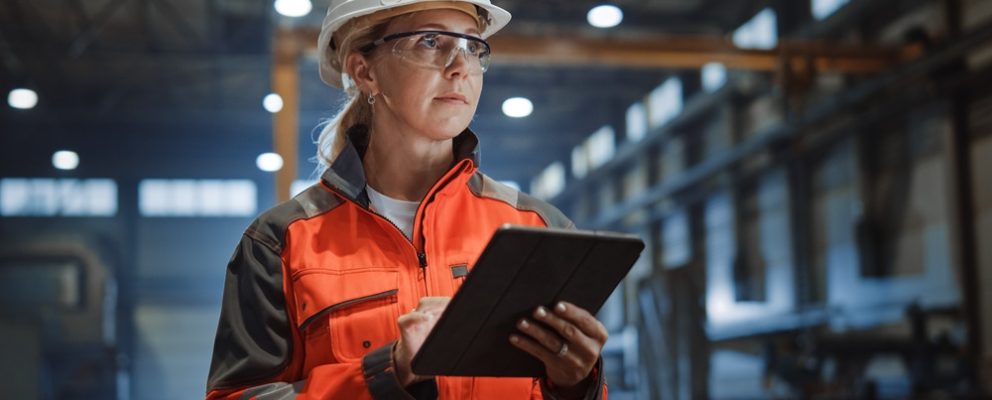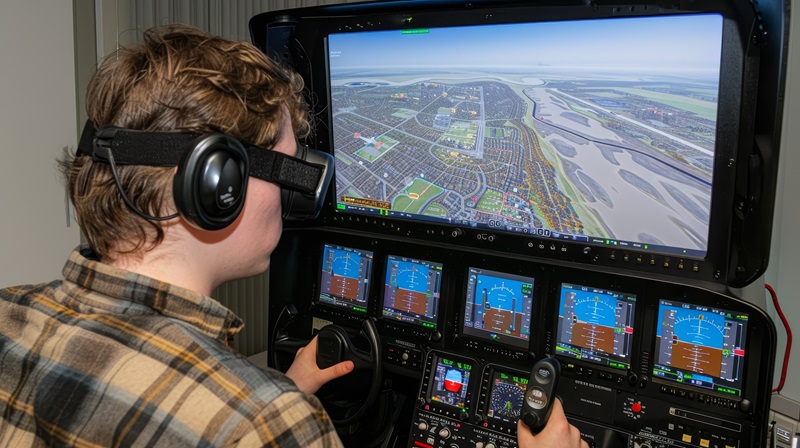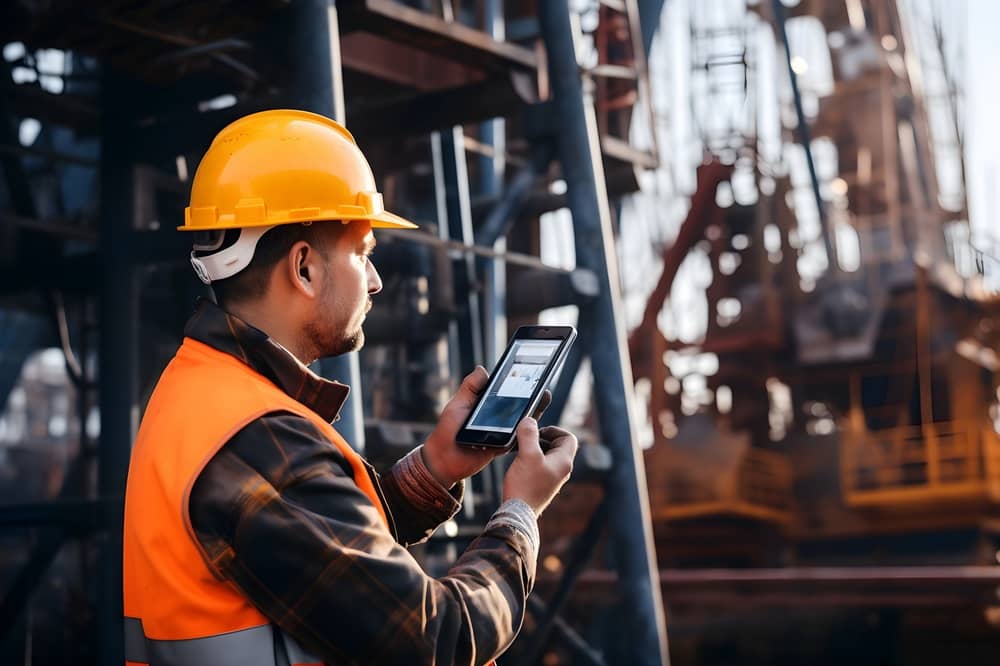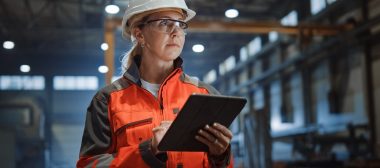In today’s industrial landscape, the role of smart sensors in enhancing workplace safety and efficiency is nothing short of revolutionary. These advanced technologies are reshaping how businesses approach safety, allowing for real-time monitoring, predictive analytics, and automated responses that significantly reduce risks and streamline operations. Whether it’s a construction site, manufacturing plant, or a remote mining operation, smart sensors are becoming integral to creating safer and more efficient workplaces.
Smart sensors like Simply Sensors work by continuously monitoring environmental conditions, equipment health, and even the physiological state of workers. This data is then processed and analysed to identify potential hazards before they escalate into serious incidents. By providing real-time insights, smart sensors empower businesses to make informed decisions that protect their workforce and optimise productivity.
As a company with extensive experience in deploying smart sensor technologies across various industries, we understand the complexities involved in maintaining a safe and efficient workplace. Our expertise lies in integrating these advanced systems into existing workflows, ensuring that our clients not only meet safety regulations but also achieve operational excellence. This blog will explore the myriad ways in which smart sensors can transform workplace safety and efficiency, providing you with insights into their practical applications and benefits.
Quick Summary:
- Smart sensors enable real-time monitoring of workplace conditions.
- Wearable technology enhances worker safety and decision-making.
- VR and AR provide advanced, immersive training experiences.
- Predictive analytics anticipate and prevent potential hazards.
- Mobile apps streamline safety reporting and communication.
- Remote monitoring and drones improve inspection efficiency.
- Continuous innovation is key to sustaining workplace safety.
Real-time Monitoring and IoT Integration
Enhancing Workplace Safety through Real-time Data
Smart sensors, when integrated with the Internet of Things (IoT), have revolutionised how businesses monitor and manage workplace safety. By providing continuous, real-time data on various environmental conditions such as temperature, air quality, noise levels, and equipment status, these sensors play a crucial role in preventing accidents before they occur. For example, in industries like manufacturing and construction, where hazardous conditions can arise quickly, smart sensors can detect anomalies and trigger immediate alerts, allowing for rapid intervention.
This real-time monitoring is particularly beneficial in environments where safety is paramount. Consider a manufacturing plant where heavy machinery operates under strict conditions. If a machine starts overheating or emitting abnormal vibrations, smart sensors can instantly detect these changes and shut down the equipment before it leads to a catastrophic failure. This not only prevents potential injuries but also minimises downtime, thereby maintaining operational efficiency.
IoT Applications in High-risk Industries
The integration of IoT-enabled sensors is especially vital in high-risk industries such as mining, agriculture, and construction. In mining, for instance, sensors embedded in helmets can detect the presence of harmful gases like methane, providing miners and mine workers with real-time alerts to evacuate the area. Similarly, in agriculture, sensors can monitor levels of pesticides in the air, ensuring that workers are not exposed to harmful chemicals. These applications underscore the critical role of smart sensors in safeguarding workers in environments where the margin for error is minimal.
Moreover, IoT technology enhances the ability to monitor remote locations where manual oversight would be challenging or impossible. For example, in remote construction sites, sensors can monitor structural integrity, detecting any signs of potential collapse and alerting workers to evacuate the area. This proactive approach not only saves lives but also preserves valuable resources by preventing accidents before they occur.
Wearable Technology for Worker Safety
How Wearables Improve Safety
Wearable technology is another significant advancement in workplace safety, providing workers with personal protection that is both intelligent and responsive. Devices such as smart helmets, vests, and glasses are equipped with sensors that monitor the worker’s environment and physiological state. These wearables can detect falls, impacts, and other physical stresses, immediately alerting the worker and their supervisors to potential dangers.
For example, in the construction industry, smart helmets can detect if a worker has fallen or been struck by an object, automatically triggering an emergency response. Similarly, in the mining sector, wearables can monitor a worker’s vital signs, ensuring they do not exceed safe levels of exertion in extreme conditions. This level of monitoring not only protects individual workers but also contributes to a safer workplace overall by reducing the likelihood of accidents.
Industry-specific Applications of Wearable Technology
Different industries have unique safety challenges, and wearable technology can be tailored to address these specific needs. In firefighting, for example, smart helmets equipped with thermal imaging and sensors that monitor air quality can provide critical information about the environment, helping firefighters navigate through dangerous situations more effectively. In healthcare, wearable devices can monitor the health of medical staff in high-stress environments, ensuring they remain within safe operational limits.
The adaptability of wearable technology makes it an invaluable tool across various sectors. By providing real-time data and automated alerts, wearables enhance decision-making and ensure that workers can respond to hazards more quickly and effectively. This not only reduces the incidence of workplace injuries but also fosters a culture of safety where workers are empowered to take proactive measures to protect themselves and their colleagues.
Advanced Training with VR and AR
Immersive Training for High-risk Jobs
Virtual Reality (VR) and Augmented Reality (AR) are transforming how safety training is conducted across various industries. These technologies offer immersive, hands-on training experiences that allow workers to engage with realistic scenarios in a controlled environment. For high-risk jobs, where practical experience is essential but dangerous, VR and AR provide a safe way to prepare employees for potential hazards.
In industries such as firefighting, emergency response, and aviation, VR simulations enable workers to practice critical skills without the risks associated with real-life training. For example, firefighters can navigate through virtual burning buildings, learning how to assess risks and make split-second decisions, all within a safe virtual environment. Similarly, in aviation, pilots can use VR to simulate emergency situations, improving their ability to handle crises without the need to endanger lives or equipment.
Benefits of VR and AR in Safety Training
The benefits of VR and AR in safety training extend beyond just safety—they also enhance the effectiveness and retention of training material. Traditional training methods, often reliant on lectures or videos, may not fully engage workers or prepare them for the realities of their roles. In contrast, VR and AR provide interactive and engaging experiences that are more likely to be retained by employees.
For instance, workers who have undergone VR training are better equipped to recall safety protocols and respond appropriately in actual emergency situations. The interactive nature of these technologies also allows for repeated practice, enabling workers to hone their skills until they achieve a high level of competence. This not only boosts confidence but also ensures that safety procedures are second nature when they are most needed.
Predictive Analytics and Data-driven Safety
Anticipating and Preventing Hazards
Predictive analytics is a powerful tool that leverages historical data and machine learning to anticipate and prevent workplace hazards before they occur. By analysing patterns and trends within data, predictive analytics can identify potential risks, such as areas where slips, trips, or falls are more likely to happen. This proactive approach allows businesses to implement preventive measures, significantly reducing the likelihood of accidents.
For example, in a factory setting, predictive analytics might reveal that certain machinery is prone to malfunction under specific conditions. By identifying these patterns early, maintenance teams can intervene before a breakdown occurs, preventing costly downtime and potential injuries. This data-driven approach not only enhances safety but also contributes to overall operational efficiency.
The Role of Data in Fostering a Safety Culture
Data-driven insights are integral to fostering a culture of safety within any organisation. By consistently monitoring and analysing safety-related data, businesses can keep track of safety performance, identify areas for improvement, and make informed decisions about where to allocate resources. This continuous feedback loop helps to ensure that safety remains a top priority and that all employees are aware of the risks and the steps needed to mitigate them.
Moreover, sharing data-driven insights with employees can help to engage them in the safety process, making them more conscious of their environment and the potential hazards they might encounter. This level of transparency and involvement is crucial for building a strong safety culture, where everyone in the organisation feels responsible for maintaining a safe workplace.
Mobile Apps for Safety Reporting and Communication
Streamlining Safety Processes with Mobile Apps
Mobile apps are revolutionising how safety processes are managed and communicated in the workplace. These apps allow employees to report hazards, incidents, and near misses in real-time, providing a platform for quick and efficient communication. This immediacy ensures that potential risks are addressed promptly, reducing the chance of minor issues escalating into major incidents.
For example, in the construction and mining industries, where hazards can change rapidly, mobile apps enable workers to report unsafe conditions as soon as they arise. This real-time reporting can then trigger immediate responses, such as halting work in a specific area until the hazard is resolved. Additionally, mobile apps can be used to disseminate safety information, such as updates to protocols or alerts about potential risks, ensuring that all employees are informed and up-to-date.
Enhancing Communication and Compliance
Beyond reporting, mobile apps also play a vital role in enhancing communication and ensuring compliance with safety regulations. These apps can store and distribute important documents, such as safety manuals, training materials, and emergency procedures, making them easily accessible to all employees. This accessibility ensures that workers always have the information they need to work safely, regardless of where they are on-site.
Moreover, mobile apps can track and log safety activities, such as the completion of training modules or the submission of safety reports. This data can then be analysed to ensure that all employees are complying with safety standards and that any gaps in training or knowledge are quickly identified and addressed. By streamlining communication and ensuring compliance, mobile apps help to create a more organised and safe workplace environment.
Smart Sensors Are Ushering in a New Era of Workplace Safety
Smart sensors are at the forefront of a new era in workplace safety and efficiency. By integrating real-time monitoring, IoT technology, and wearable devices, businesses can ensure that potential hazards are detected and addressed before they escalate into serious incidents. The adoption of VR and AR for safety training further enhances this by providing immersive, hands-on experiences that better prepare workers for the challenges they may face. Moreover, predictive analytics and mobile apps offer data-driven insights and streamlined communication, enabling businesses to maintain a proactive and responsive safety culture.
The implementation of these technologies not only improves safety outcomes but also contributes to greater operational efficiency. With the ability to predict and prevent accidents, optimise workflows, and ensure that all employees are informed and compliant with safety protocols, smart sensors and related technologies are indispensable tools for modern businesses.
Need Help Implementing Smart Sensors for Your Business?
At Simply Unified, we specialise in integrating smart sensor technology into workplaces, providing bespoke solutions tailored to the unique needs of your industry. Whether you’re looking to enhance safety measures, improve efficiency, or both, our team of experts is here to help you achieve your goals.
Contact us today to learn more about how we can assist you in creating a safer, more efficient workplace.






